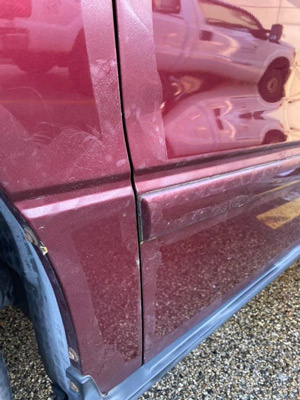In Part 1 of this post, I covered information and items to collect when determining estimates for commercial vehicle and retail jobs. The following will highlight more tips on establishing expectations, quoting installation removals, and contingencies if a client cannot provide all the necessary information.
It is extremely important installers set parameters and expectations with the project manager and the end client in regard to the final product. This is a necessity for your estimating purposes and so there are no surprises once the project is complete.
A simple example of this is asking the client whether they want their window perf to go to the edge of the window, against the rubber gasket, or whether they would like the film trimmed back and sealed with an optically clear tape. The con in the former scenario is that we do not warranty possible future lifting, while the pros are full coverage and they save a little money. In the latter scenario, the cons are a small border of uncovered area around the edge of the windows — and we do charge more for this service — while the pro is a warranty on future lifting. You should always give the client their options with as much information as possible and let them make the decision for you to price accordingly.
 For removals, we require a “pull-test” before we will quote any removal that we did not install. This is because we cannot know what to expect. A good example would be a request to remove a vehicle wrap that has only been on for six months. You would think this should come off easily, but if the installer decided to paint the vehicle with an adhesive promoter (and this does happen, as shown in the photo), you are in for the fight of your life. In the event that it is impossible to do a “pull-test,” we quote an hourly rate for each installer so even if the removal is a nightmare, we are being compensated appropriately for our labor.
For removals, we require a “pull-test” before we will quote any removal that we did not install. This is because we cannot know what to expect. A good example would be a request to remove a vehicle wrap that has only been on for six months. You would think this should come off easily, but if the installer decided to paint the vehicle with an adhesive promoter (and this does happen, as shown in the photo), you are in for the fight of your life. In the event that it is impossible to do a “pull-test,” we quote an hourly rate for each installer so even if the removal is a nightmare, we are being compensated appropriately for our labor. Sometimes, we will get requests and our client cannot provide us with all of the information we need to provide a proper quote. When these occasions arise, we list caveats on the quote. For example: “This quote is contingent on the tallest point of all wall mural not exceeding 14 ft. in total height from the ground. This quote is also contingent on the fact that there are no obstructions to the installation area. Any diversion from these contingencies may result in additional charges and fees.”
And finally, we have a Terms of Agreement that we send out with each quote that states all of the things that could add to the cost of the quote. An example of an additional cost would be any downtime incurred by our company due to the site not being ready for installation or graphics not arriving on time. We say the client will be charged our hourly rate per installer, per hour.
The bottom line is you really need to do your homework and be proactive about getting all of the pertinent information before submitting an installation estimate or quote. Otherwise, you can easily sell yourself short and hurt your bottom line. Create a system that works for your company and clientele as every market is different.
 Ken Burns is the President/CEO of Axis Graphic Installations. A Boston native, Burns studied Business Management in the mid 90s and has consulted, developed, and managed multiple Fortune 500 companies. In 2006, he left his career to pursue the art of installing vehicle wraps. He saw the value of this niche industry and decided to bring his knowledge of large corporate structure to a newer industry that mostly comprised independent subcontractors. Burns started his first installation team in South Florida in 2009 and has since developed teams in Texas, Georgia, North Carolina, Maryland, and Pennsylvania. Beyond vehicle wraps, he and his teams have become proficient in all types of sign and graphic installations.
Ken Burns is the President/CEO of Axis Graphic Installations. A Boston native, Burns studied Business Management in the mid 90s and has consulted, developed, and managed multiple Fortune 500 companies. In 2006, he left his career to pursue the art of installing vehicle wraps. He saw the value of this niche industry and decided to bring his knowledge of large corporate structure to a newer industry that mostly comprised independent subcontractors. Burns started his first installation team in South Florida in 2009 and has since developed teams in Texas, Georgia, North Carolina, Maryland, and Pennsylvania. Beyond vehicle wraps, he and his teams have become proficient in all types of sign and graphic installations.